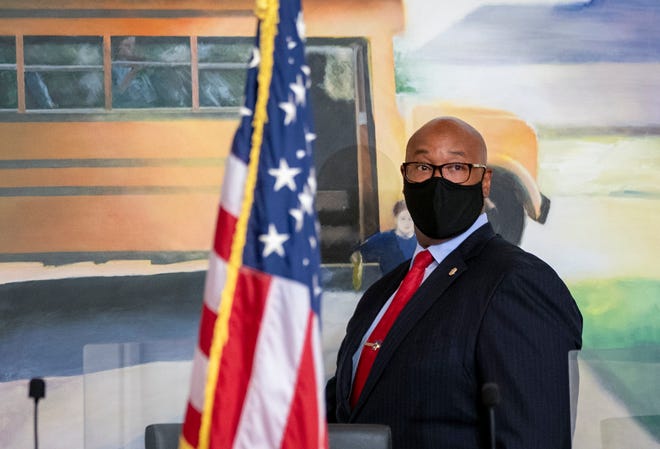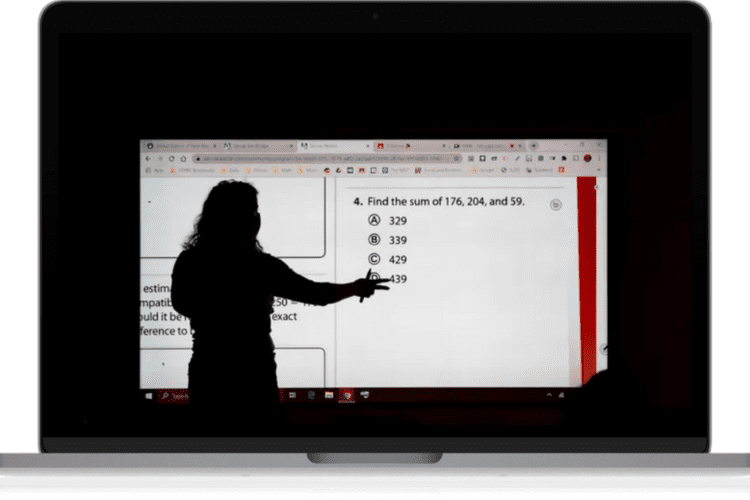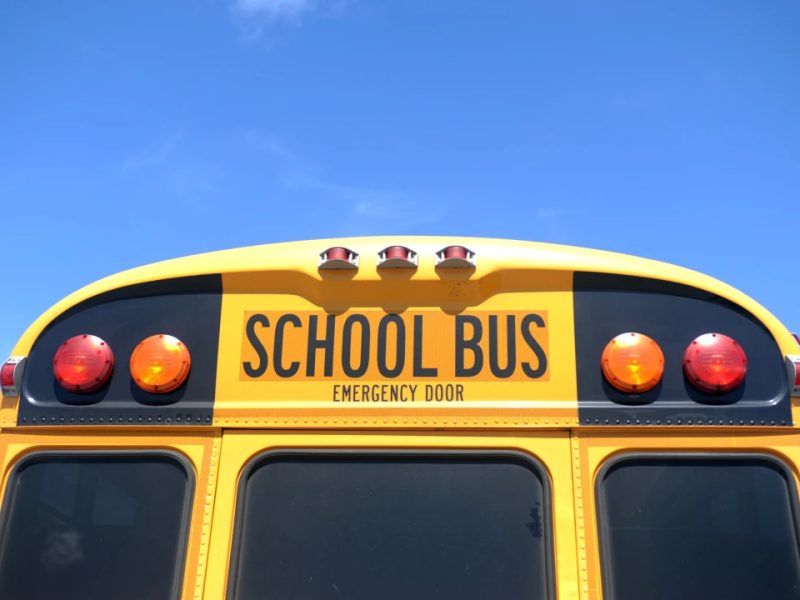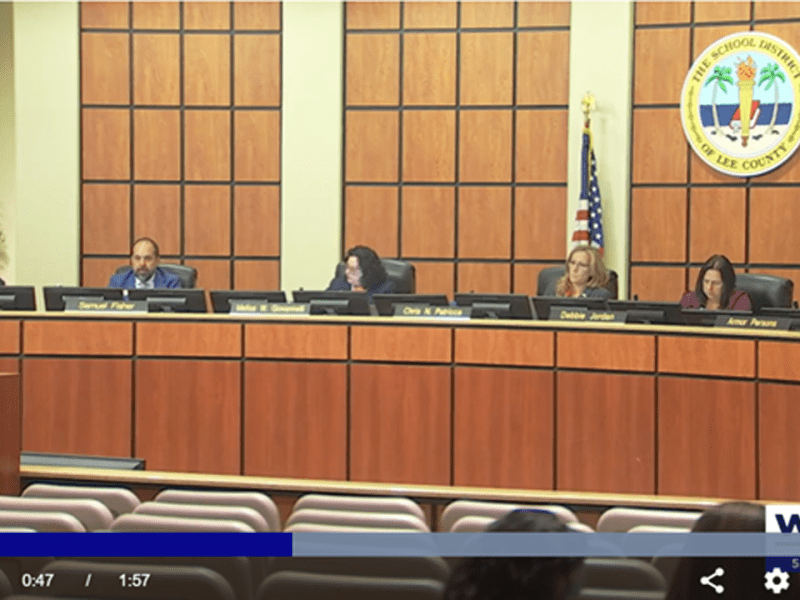COVID slide: PBC schools to hire 369 more teachers, staff to help students catch up
Palm Beach Post | by Sonja Isger | June 8, 2021
Palm Beach County school leaders have proposed adding 369 teaching and staff positions to the district rolls in the fall to help chip away at dramatic learning losses incurred during the pandemic.
The nearly $31 million effort would target schools with the most students in crisis and direct the teaching expertise at students in critical points in their education.
Those points include first- and second-grade reading, middle school math and reading, and high school SAT and ACT test prep for students who will need higher scores to meet new state graduation standards.
The need is considerable.
In a year in which most students learned mostly from home, more than 50,000 of the district’s 170,000 need significantly more support in reading and math, district leaders report.
The number of students failing a class doubled this year in middle and high school, while the number of F grades nearly tripled in the first grading period, according to district records.
Staff proposed the hiring push to the school board Wednesday. The strategic additions are considered just one element of an ongoing plan of attack — a plan that has already hit a few bumps in the road.
The first phase began in the spring with extra instruction and tutoring. But Deputy Superintendent Keith Oswald told the board some schools have struggled to find teachers to fill tutoring openings.
Money that goes unspent in spring tutoring will roll into the rest of phase one: an expanded summer school, with 13,500 students enrolled so far, Oswald said.
The district and the teachers union this week came to an agreement that would offer teachers $500 and $1,000 incentives on top of their hourly pay to return to the classroom for a four-week summer. The recruiting effort is now underway, Oswald said.
“I know a lot of the teachers are burned out,” school board member Marcia Andrews said. She suggested that if the district becomes too thinly stretched it should lean on community programs that often offer tutoring.
Adding teachers to the district’s roster, however, will take the effort to a new level, Superintendent Donald Fennoy said.
In past years, the district has talked about targeting reading skills for third-graders, for example, but didn’t put the money, people and training into the earlier grades to reach that goal.
With tens of millions in federal COVID relief dollars guaranteed to pour through the state and into the district over the next three years, Fennoy said he sees opportunity.

“We have a moment in time where we are almost held harmless, so let’s put the resources and the people where it needs to happen,” Fennoy told the board. But timing will be critical.
Fennoy said the district is seeing “a lot of interest in coming to work in Palm Beach County right now,” but the district has no vacancies until the board signs off on the proposal to hire.
The openings would include 206 positions at the elementary level, 93 in middle school and 70 in high school.
Most of those hires would be teachers working with students daily, but the list also includes school-based teachers who would work more directly with the teachers to strategize, monitor student progress and target their efforts.
Eight positions would go to specialists who would report to the district’s curriculum office and who would be tied to the programs that are being introduced as part of the catch-up plan.
To determine how to distribute these resources, Oswald and his team are sorting schools into three categories of need, what they call tiers. A school is put in one of three tiers based on student performance and demographics, poverty as gauged by participation in the federal discounted meals program and teacher experience.
Tier 1 and 2 schools are those deemed the neediest and where the most human capital would be invested, Oswald said. The list was still being finalized Friday and was not yet available.
Additional types of support will be provided to all schools in other portions of the plan that have yet to be presented. Those supports, to be detailed later, will include more tutoring options, flexibility to have more periods in a day for secondary students who will need to catch up by taking more courses or retaking them.
“We didn’t just want to buy stuff because we knew all of this money was coming. We wanted to make certain whatever we did would have tremendous impact,” said Chief Academic Officer Glenda Sheffield.
The 369 positions are specialized in nature, requiring additional, sometimes year-long, training to focus on specific aspects of academics.
Neediest elementaries to get 3 to 4 more teachers
Of the district’s 109 elementary schools, 56 will fall into tiers one and two — most of them serving significant numbers of students living in poverty.
Those 56 would each get three more teachers: One would focus on the district’s third-grade accelerated math program as well as building and enhancing gifted programming. A second would be a resource teacher to work in small groups of students in kindergarten through second grade. The third, to be named a PLC, or Professional Learning Community, facilitator, would help guide teacher lesson planning and strategy sessions, analyzing student progress.
Thirty-four of the 56 schools fall in the top tier and will get a fourth teacher, a specialist trained in Reading Recovery. They’d work with individual students half of the day and in small groups of first- and second-graders for the rest of the day.
Middle and high schools get help, too
Eighteen of the district’s middle schools will each get five additional teachers, specialists in reading and math, with a focus on Algebra I skills. They, too, would get a PLC position.
A dozen high schools would get at least six additional teachers, including those who can help address substantial reading and math deficiencies, and support algebra instruction. They, too, will get a PLC facilitator.
They will also get at least one, and as many as two teachers focused on getting students to earn the test scores and proper credits necessary to graduate. Much focus is expected to go to achieving higher scores on the SAT or ACT exams. The college entry tests are alternatives to the state’s reading and math exams, but the state is raising the scores necessary to use them to graduate.
During the presentation, school board Chairman Frank Barbieri said he worried about the students who are struggling at schools that do not fall into the top tiers getting additional staff.
“I want to make sure those kids get the same resources,” Barbieri said.
Resources will flow to all schools, Oswald said. But the additional staffing is costly.
“We know there are struggling students everywhere, but we are targeting schools that have the biggest lift,” Oswald said.
And the jobs will expire in three years when the federal relief spigot for education is turned off.
Chief Financial Officer Mike Burke said the good news about that is the positions can likely be absorbed into the district’s schools that each year hire about 1,000 teachers to fill vacancies in a workforce of more than 12,000.
School board member Barbara McQuinn was excited about the opportunity.
“This is so wonderful that we have three years’ of money. I asked at the beginning of COVID, ‘What are we doing significantly different?’ This is something we’re doing significantly different.”
Featured image: Third-grade teacher Kathryn Dorros teachers math class online and in person at the same time at Grassy Waters Elementary School in West Palm Beach earlier this year. Greg Lovett/Palm Beach Post






